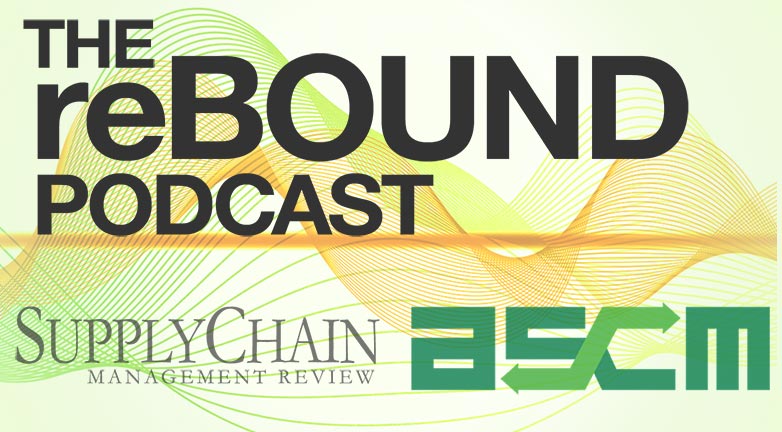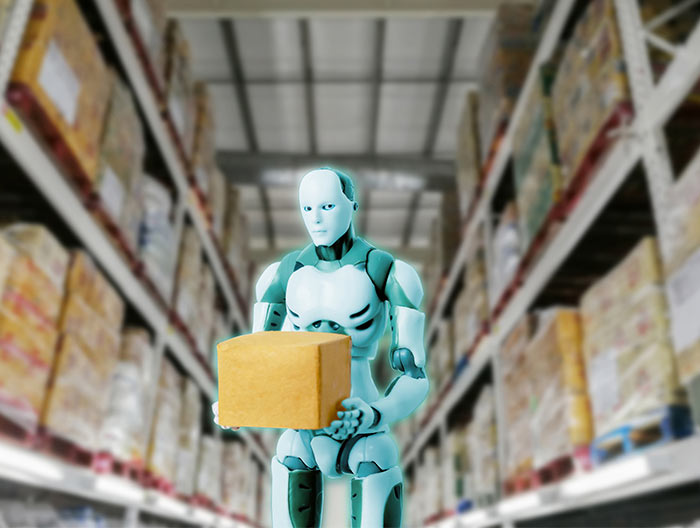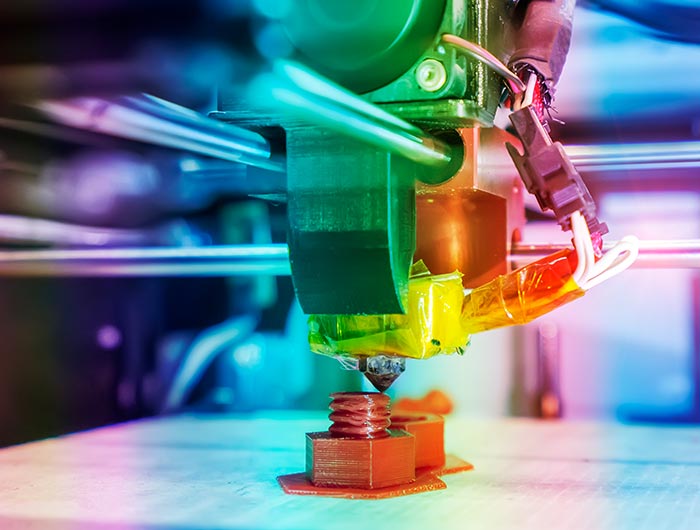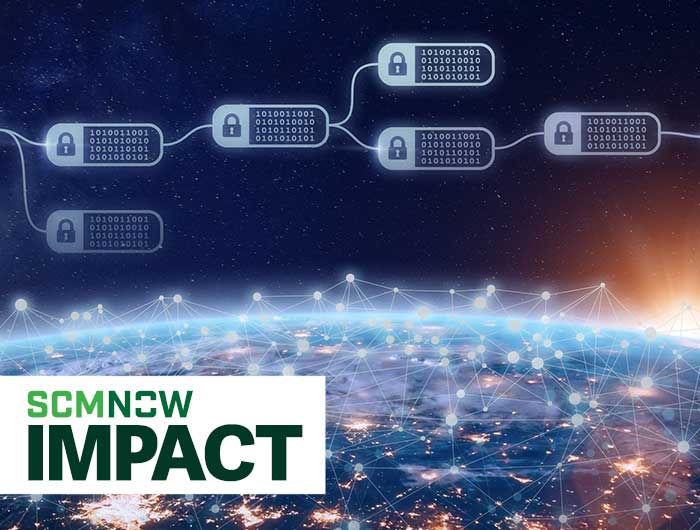Bob Trebilcock: Welcome to The Rebound where we'll explore the issues facing supply chain managers as our industry gets back up and running in a post-COVID world. This podcast is hosted by Abe Eshkenazi, CEO of the Association for Supply Chain Management, and Bob Trebilcock Editorial Director of Supply Chain Management Review. Remember that Abe and Bob welcome your comments. Now to today's episode. Welcome to today's episode of The Rebound: So, You Want to Use a Robot. I'm Bob Trebilcock.
Abe Eshkenazi: I'm Abe Eshkenazi.
Bob: Joining us today is Barbara Gress. Barbara is Director of Engineering and Innovation for the third-party logistics provider, NFI. Barbara, welcome.
Barbara Gress: Thank you. Good to be here.
Bob: The other day, I asked a friend at one of the leading supply chain design engineering firms, "Well, what's new? What are clients asking you about?" His one-word answer was right out of The Graduate. It wasn't plastics. It was robots. He also had a piece of advice, robots aren't the solution to everything that ails your operations. To do it right, you really need to create an innovation team to evaluate your operations and to identify if and where robots might deliver value. What does it take to introduce robotics into your order fulfillment operations?
Once you get robots up and running, where do you go next? How do you extend the value you're getting from your investment? Those are questions Barbara is here to answer. Barbara, let's start with some brief background. What does NFI do? What has changed about your business that got your organization thinking about robotics?
Barbara: NFI is a fully integrated third-party supply chain solution provider. It's been privately held by the Brown family since its inception in 1932. Our business lines include dedicated transportation, warehousing, brokerage, transportation management, and real estate services. This past year, we generated close to about $3 billion in annual revenue have over 14,000 associates, and are managing around 53 million square feet in distribution space. I think what everyone has felt over the past year is that COVID just really accelerated a lot of those existing challenges that were already out there.
For us, it's the labor market challenges. Anything with increased labor rates, retention, and then the customer expectations and demand. What we saw in the past year is COVID took those challenges and really brought it front and center in terms of what our customers are expecting from us. Really what has changed for me and my role is the pace in which we're testing the technology, as well as just the number of providers we're seeing in the supply chain tech space. For the most part, technology scouting has revolved around different robotic providers, whether that's AMR, VGVs robotic fulfillment-type operations, the demand has increased to the point where we're just trying to keep pace with our customers.
Abe: Barbara, as you're talking about the pace of change, and obviously it has accelerated significantly for 3PLs' distribution logistics, and only exasperated by the pandemic. Your decision criteria for robotics, autonomous robots as well as piece-picking, how did you decide where to start within the organization? Give me a sense of your decision criteria, and what did you start implementing? Where did you start the journey?
Barbara: We know that we always have to continuously evolve to keep up with the market. Innovation is a really critical pillar in terms of NFI strategic initiative, as well as the concept of applied innovation. As we're thinking about who and where, we're really having a lot of conversations and collaborations with our customers, as well as our operators and our engineers who are dedicated to those customers. If you think about I guess the prioritization of what we're looking at and why we're looking at, that's really dictated upon our customer needs and how we're supporting them operationally.
This past year, we had several implementations that included AMRs, AGVs, VGVs, and robotic arms that complimented some of the solutions we already had in place for our goods-to-person solution. AMRs we have for our picking operation, in that support picking activity, we have tugger VGVs in one of our larger retailer facilities that's pulling product from inbound to put away. Then we have forklift AGVs that are supporting that put away process as well. The robotic arm that complements our goods-to-person solution is really there supporting our e-commerce activity that has grown more and more over the past year and how we're supporting our customers as they shift from that B2B to B2C type activity.
Bob: Barbara, I'm going to ask you a question a minute about the steps that an innovation team takes and how you did your research and things, but first you just talked a little bit about the different types of robots that you're using the autonomous mobile robots, the automated lift trucks, some of the piece-picking. Then we'll come back to this other question, but can you just briefly tell us in the process what they do in your facility? What the autonomous mobile robot does. What does the piece-picking robot do and how does it support that?
What does the automated lift truck do or your tuggers?
Barbara: For our AMR solutions, that's supporting a retail operation and it's supporting each pick operation. It's moving along with the operators as they're doing their picks. It's flexible enough that it has the ability to travel on its own and quickly react if people or different forklifts are in the operation. That's supporting more of our pick operation. The VGVs and the AGVs that I talked about, we have tuggers that are pulling three trailers of product from the receiving dock to a storage area, and then back to the dock with return products.
That's really helping eliminate a lot of our travel time in some of these really large facilities, so that autonomous material movement that tugger is really allowing us to achieve that where we've seen a lot of productivity improvement, where we're able to focus those resources in more of a productive type of work. The AGVs or the autonomous forklifts, they're doing something similar, but now you've got pallets and they're moving those pallets from the inbound activity into storage. The difference is really the type of product whether they're floor loaded or pallets, it's going to determine what type of equipment we're using.
Bob: Great. Thank you. Let's move back to-- you're director of innovation and a project like this is innovative. Again, going back to what my friend at St. Onge who was saying, you really need to have an innovation team and start there. If you think about what you did at NFI early on, as you're thinking about robotics, it sounds interesting, would it work for us? Who's going to be the right fit? How do we pilot? Can you walk us through some of those steps to get to, "Yes, we've got a project and we're going to do something with it"?
Barbara: Sure. The whole concept of applied innovation is where we're testing the technology and we're really working with our operations and engineers to make sure we have the right fit. In order to do that, we knew that we needed to create some governance around that process. We created our innovation delivery method and really what that does is it's a five-step process in which we funnel and prioritize all those ideas and concepts that come through, whether it's from our engineers or customers. Just other knowledge that our workforce has.
Maybe they've worked with a different company in prior past, but it basically takes those concepts to a point where we're now prototyping. That prototype is the second phase of our innovation delivery method, where now we're finding technology partners that not only meet those business challenges and needs of our customer, but also it gives us a little bit of learning about them and the strategic mindset that they have potentially to learn and grow with NFI, which is really another critical part of our engagement process if you think about the collaboration and the integration that goes back and forth between some of our solutions and our customers, as well as our operations.
Then finally once that piece is finalized, do they actually have a solution that meets our need? Whether it's discrete putting products away. Maybe it's an order task like palletization, sortation, labeling, that core activity. If that is something that they can solve, and we believe it's something very scalable across NFI network, then that second part where I talked about mindset is we really look for a technology partner who works with a 3PL.
Automation for the most part, has not been something that people just jump into, because it is very CapEx-intensive. Sometimes the budgets and ROIs don't really match the 3PL world of three to five-year contracts. What we're seeing more is that change in mindset of business model of how technology partners engaged with a 3PL, creating more of an opportunity to really enter into a robotic solution that offers a little bit more flexibility that supports our business model, and some of the variability that we see with not only the supply chain, the peaks and the valleys of volume, but also just how our customers potentially either stay with us or they come and go.
Once that pilot is identified, it goes through a couple of toll gates and criteria, but there is a lot of collaboration that goes not only around the solution, the technology they're able to provide, but also the willingness of that technology provider to work with and be a little iterative within our own process.
Abe: It's really fascinating what you're bringing up in terms of the collaboration and the need for this and I think it's been highlighted through the pandemic. You talked a little bit about the investment in technology and as you indicated before, this has been accelerated through the past year and a half. There's a couple of adages out there about investing in technology without evaluating your processes and your tools. One of them being that if you're going over the cliff, technology is only going to get you there faster.
How do we evaluate? How do we take away the concept of handing the keys to a Ferrari to a 16-year-old in terms of what training match the investment in your technology for your workforce? Both internally and for your partners, because as a 3PL you rely on a series of partners as you just described in your technology. How do you focus on the people side of this?
Barbara: When we look at technologies, like a robotic solution, first and foremost, safety is our number one priority and we want to ensure that whatever technology we implement, it works with our warehouse associates, and it's safe. The second piece is reliability and uptime. You talk about we're supporting our customers, if we're not able to execute, neither are they. That need to work with a provider that really the maintenance issues are not a concern, that's something else that we look at.
Now, when it comes to a specific facility and process where we introduce a robotic solution, we work really closely with our operations and dedicated engineers, that supports that customer to define not only this current date but then also to think about the future state as technology is introduced. What's really important is to walk the process with the people who are performing that activity. A process documented on paper can look and feel totally different once that user is in the environment, interacting with the robot.
We take a chance or that opportunity to really hone in on the actual process and make sure that we've identified all of the different things that could go wrong, or potentially would change in a layout as we think about introducing that solution to the operation as a whole.
Bob: Barbara, that's a great segue to this next question. This is the "if I only knew then what I know now" question. You've been using autonomous mobile robots for over a year now and then introduced these others. Anytime you put in automation, there's the things that worked just as you planned it, the things that worked better than you'd planned, the unexpected on the positive and then the things that didn't go as you'd thought, and then you had to adjust. Thinking about those three things, what worked as planned, what worked better than planned, and then what didn't go as planned and how did you adjust to adapt?
Barbara: With any pilot, there's a lot of lessons learned, and we always share that, but I think what we've learned over the course of the last year and a half is the ability test and scale technology needs to be innovative and nimble. I think our mindset of where we were a year and a half ago versus where we are now in testing the technology, we understand that it's okay to fail. A part of that is the adoption of our workforce and the people who are actually using it. It's one thing to go in and understand that that technology might solve that existing problem, but how is it incorporated into the operation and with the workforce that's actually using it.
That's been a huge learning curve for us is how we introduce our technologies and how we get the folks on site to almost be advocates for the solutions we're doing so they're really driving, I guess, the success of a lot of the technologies we're implementing.
Abe: Barbara, last question, let's take a look at more towards the future, as opposed to the lessons learned as you're evaluating emerging technologies, most of them like robots have been point solutions. As you've gained the experience, then the lessons learned that you've just described, what's on the horizon, what do you see that could potentially be a game-changer for you in the industry?
Barbara: When I think about emerging technologies, I think about them in three different categories or themes. One is people, how are the people working? What's their total user experience? How are they executing their job and interacting with other aspects of NFI as an employer? Then the other one is location, COVID has really shifted where employees, customers, suppliers, and the organization as a whole, that ecosystem where it physically exists. Then the last bucket of something that I think about is resilience, and really taking into account the volatility of the supply chain, and the enormous amount of data that we're collecting from various automated processes.
If you combined all those three things, and think about what is emerging next, I think one of the things we're seeing with our technology providers is just the collaboration aspect of it, that it's really about an end-to-end solution and all the touchpoints versus these point-to-point solutions. It's been a fantastic conversation as we think about different perspectives and how they come together to really create that overarching solution that fits within our operation and how our people are engaging with it.
I can't say specifically the technologies that I'm seeing, but I think that's a common theme as we're talking to more and more technology providers, the willingness to engage and collaborate with each other as well as customers really looking to us to be the thought leader and drive some of that conversation.
Abe: Barbara, really a fantastic journey that you're on and obviously one that we'll want to keep up with. That's all the time that we have today. A special thanks to our guest, Barbara Gress and thank you for joining today. We hope you'll be back for our next episode. For The Rebound, I'm Abe Eskenazi.
Bob: I'm Bob Trebilcock.
Abe: All the best.
Barbara: Thanks.
Bob: The Rebound is a joint production of the Association for Supply Chain Management and Supply Chain Management Review. For more information, be sure to visit ascm.org and scmr.com. We hope you'll join us again.



